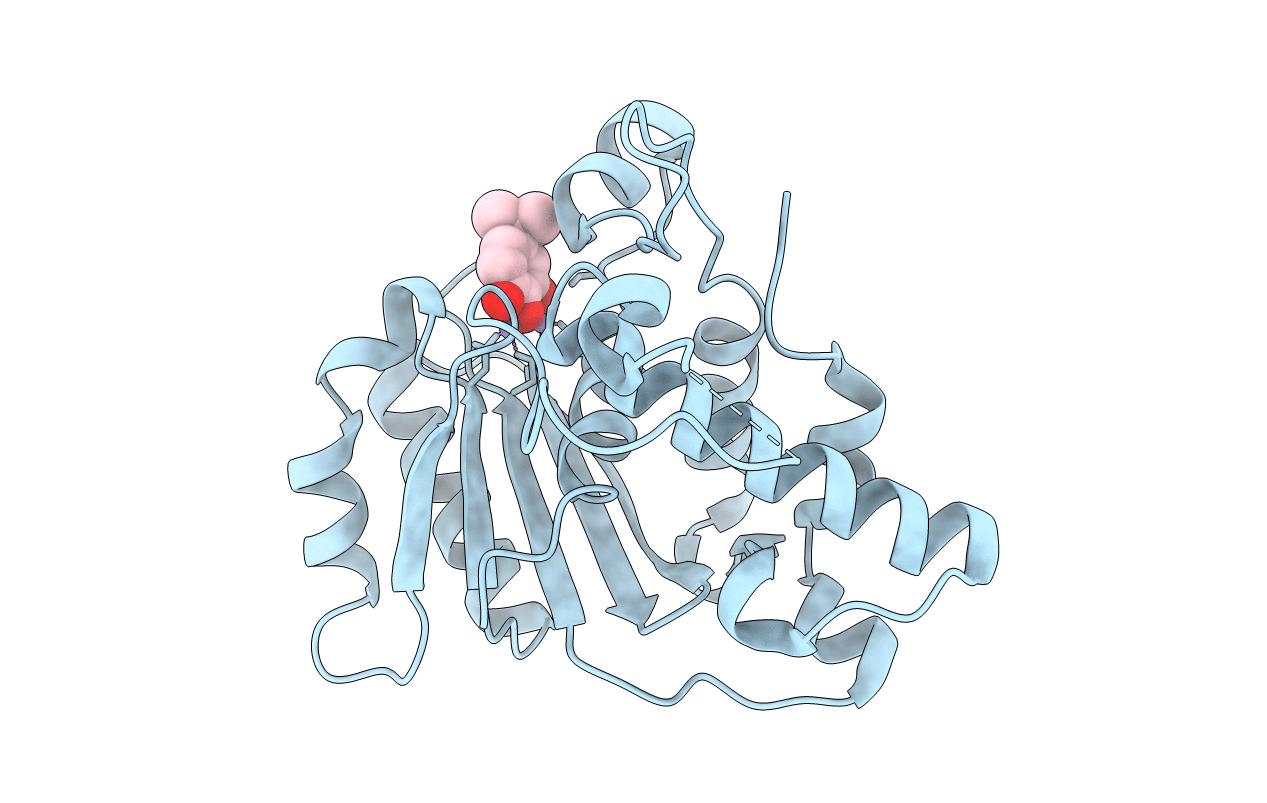
Deposition Date
2015-06-15
Release Date
2015-10-21
Last Version Date
2024-03-06
Entry Detail
PDB ID:
5C2F
Keywords:
Title:
K428A mutant nuclease domain of the large terminase subunit gp2 of bacterial virus Sf6 with Manganese and beta-thujaplicinol
Biological Source:
Source Organism:
Enterobacteria phage Sf6 (Taxon ID: 10761)
Host Organism:
Method Details:
Experimental Method:
Resolution:
1.86 Å
R-Value Free:
0.20
R-Value Work:
0.16
R-Value Observed:
0.17
Space Group:
P 1 21 1


